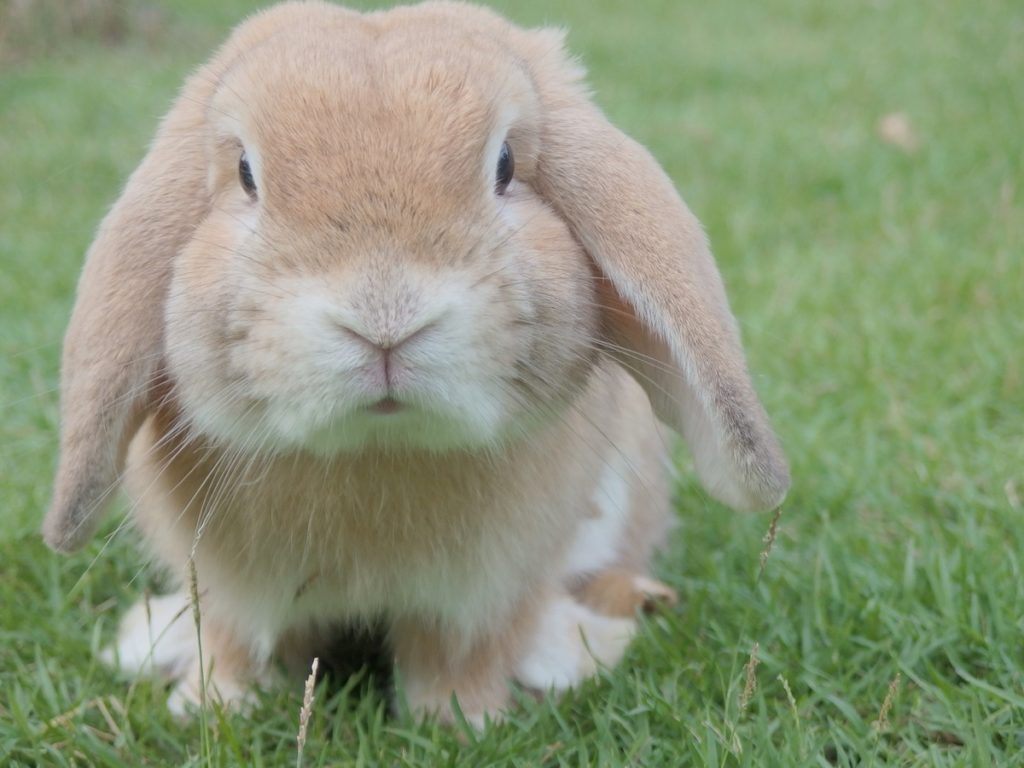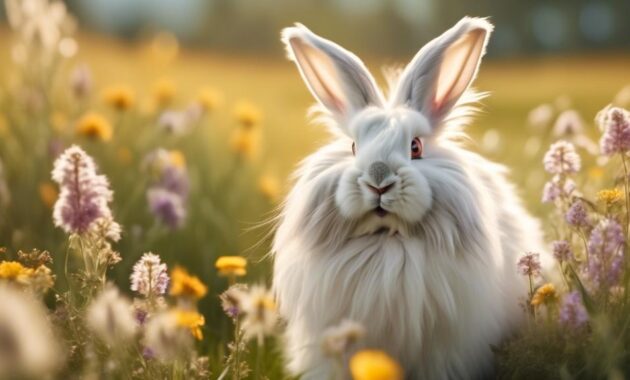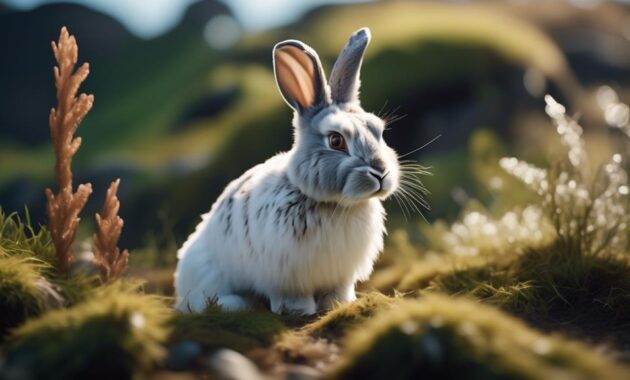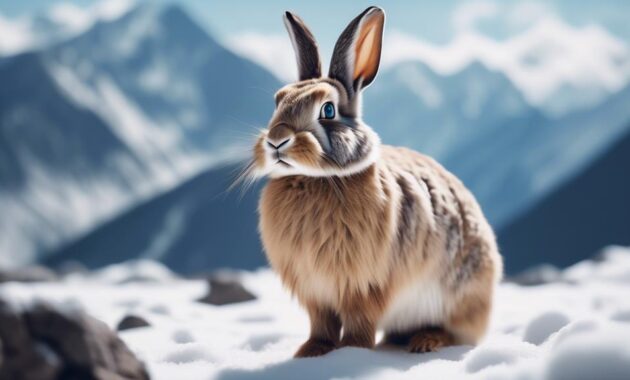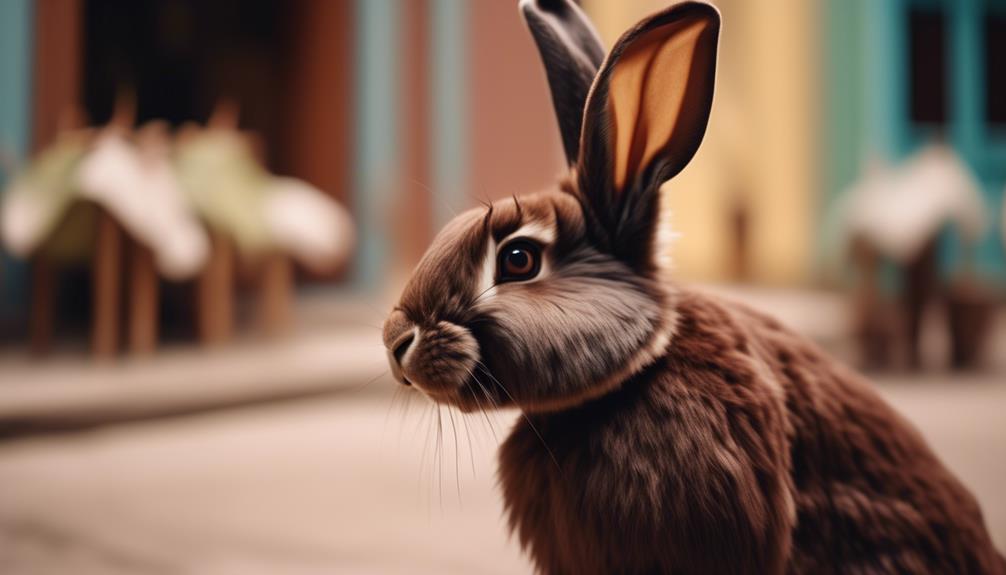
Are you hesitant about adding a rabbit to your home because you’re worried they might not be as charming and affectionate as a dog or cat? Well, prepare to be pleasantly surprised by the delightful Havana Rabbit breed. These captivating rabbits have a rich history and unique characteristics that set them apart from other breeds.
From their origins in Holland to their popularity in the United States, the Havana Rabbit has captured the hearts of many. But that’s just the beginning. There is so much more to discover about their distinctive coat colors, care requirements, and temperament.
Get ready to embark on a journey of fascination as we explore the enchanting world of the Havana Rabbit breed.
Key Takeaways
- The Havana rabbit breed originated in Holland in the late 1800s and was named after its chocolate color resembling Cuban cigars.
- The breed is characterized by a compact body with a half-circle top line, short straight legs, and short ears, giving it an adorable appearance.
- Havana rabbits come in various colors including chocolate, blue, black, and broken, with broken Havanas having a combination of two or more colors.
- Proper care and a balanced diet are essential for the well-being and longevity of Havana rabbits, and they can thrive in a variety of environments, making them suitable for different households.
Breed History and Origin
The Havana rabbit breed, with its origins in Holland in the late 1800s, is named after its chocolate color resembling Cuban cigars. These adorable rabbits were brought to the United States in 1916 and have since gained recognition from the American Rabbit Breeders Association (ARBA).
Back in 2008, color specifications were made for the broken-colored Havana Rabbit line. The recognized colors for this breed include chocolate, blue, black, and broken.
The Havana rabbit is a compact breed that shouldn’t exceed 6.5 lbs. They’ve short, rounded bodies with a half-circle top line and short, straight legs with dark-colored toenails. Their ears are short, their eyes are medium-sized, and their heads are short with full cheeks. Their coats are short, soft, and require minimal maintenance.
Overall Description and Physical Features
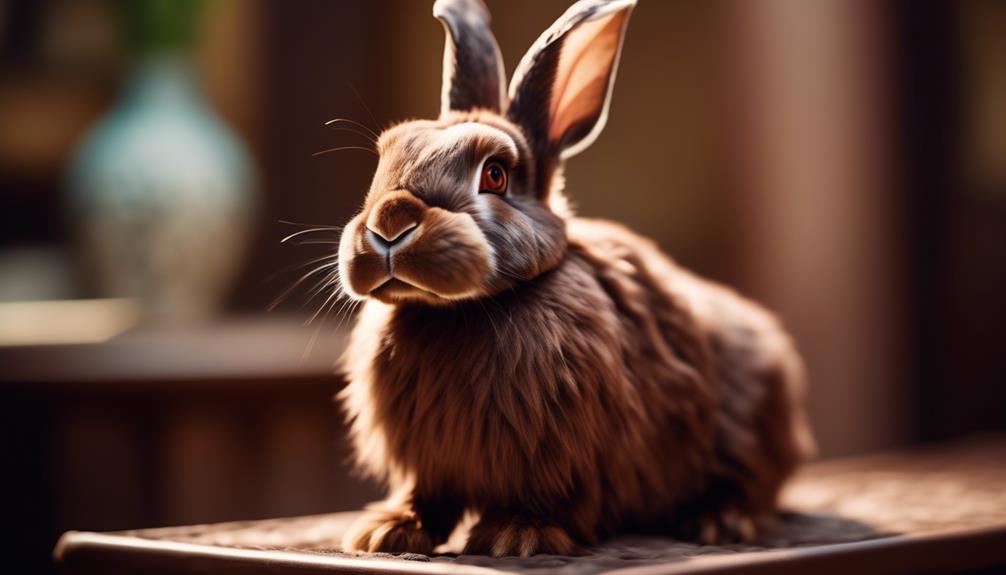
With their compact bodies and charming physical features, Havana rabbits are a delightful addition to any family. These adorable creatures possess a unique combination of features that make them stand out from other breeds.
Here are some of their distinguishing characteristics:
- Short, rounded body with a half-circle top line
- Short, straight legs with dark-colored toenails
- Short ears, medium-sized eyes, and a short head with full cheeks
The Havana rabbit’s physical appearance is truly captivating. Their compact build, along with their distinctive features, gives them an irresistible charm. Their rounded body and half-circle top line create a pleasing silhouette, while their short legs and dark-colored toenails add to their overall appeal. Additionally, their short ears, medium-sized eyes, and full cheeks contribute to their adorable and lovable appearance.
Whether you’re looking for a companion or simply want to admire their beauty, the Havana rabbit is sure to capture your heart.
Coat Colors and Patterns
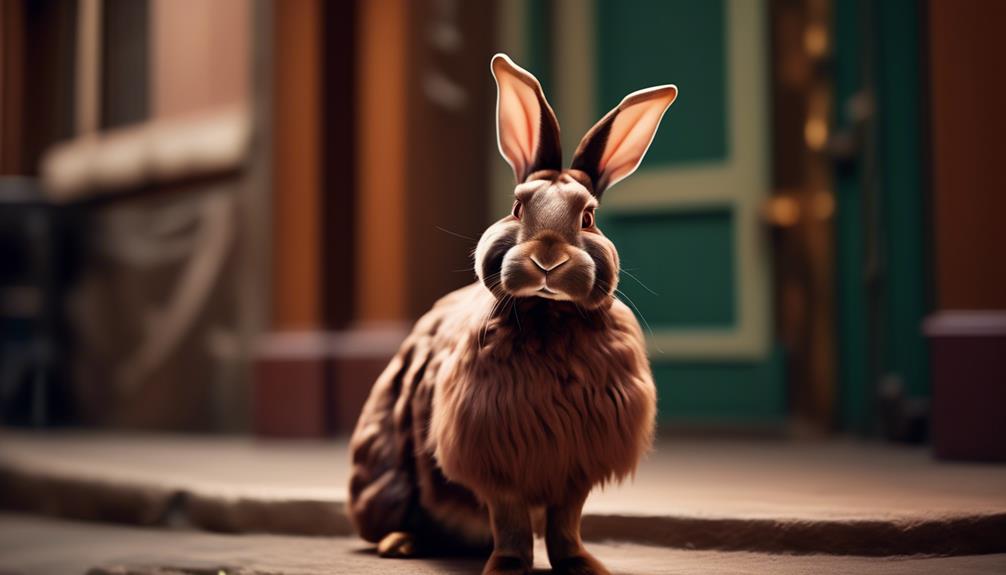
As we move on to discussing the coat colors and patterns of Havana rabbits, let’s explore the captivating variations that add to their overall charm.
Havana rabbits have a short, soft, and flyback fur that requires minimal maintenance.
The recognized colors for this breed include chocolate, blue, black, and broken.
The chocolate color resembles Cuban cigars, which is why the breed is named Havana.
The blue color is a dilution of black, resulting in a smoky blue shade.
Black Havana rabbits have a rich, deep black coat.
Broken Havanas have a combination of two or more colors, with one color being white.
These coat colors and patterns contribute to the unique and alluring appearance of Havana rabbits, making them even more delightful to own.
Care Requirements and Health Considerations
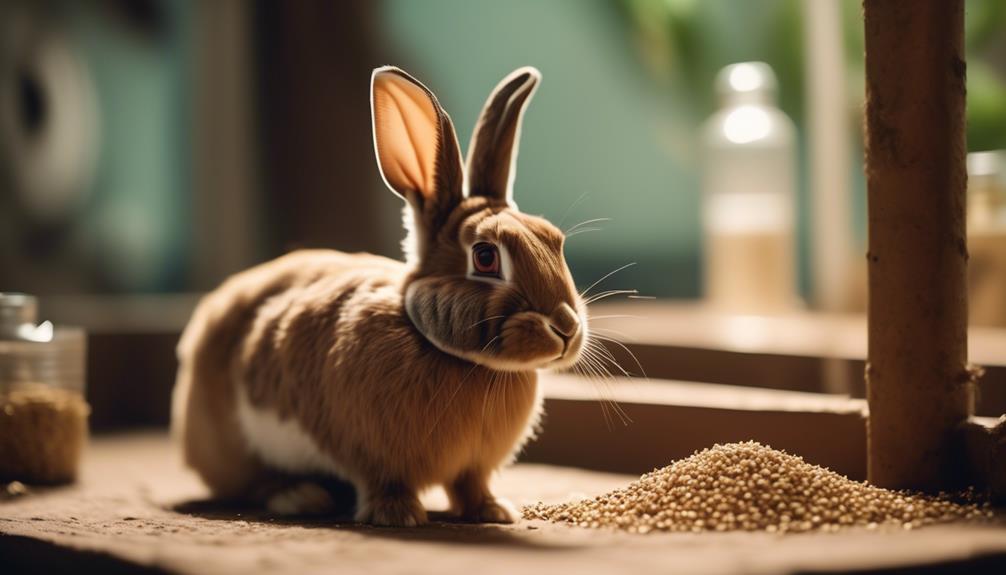
To ensure the well-being and longevity of your charming Havana rabbit, it’s important to understand their care requirements and consider their health needs. Here are a few key points to keep in mind:
- Diet: Provide a balanced diet consisting of at least 70 percent hay, along with pellets, leafy greens, fruits, and vegetables. This will help maintain their digestive health and provide essential nutrients.
- Housing: If keeping your Havana rabbit outdoors, make sure the enclosure is raised off the ground and provides protection from wildlife. For indoor rabbits, provide a safe and spacious environment with plenty of room for exercise.
- Health checks: Regularly inspect your rabbit’s mouth for any signs of overgrown or ingrown teeth. Additionally, be aware of flystrike, a condition where flies lay eggs on the rabbit’s fur, and ensure regular cleanliness checks for outdoor rabbits.
Best Suited Environments and Temperament
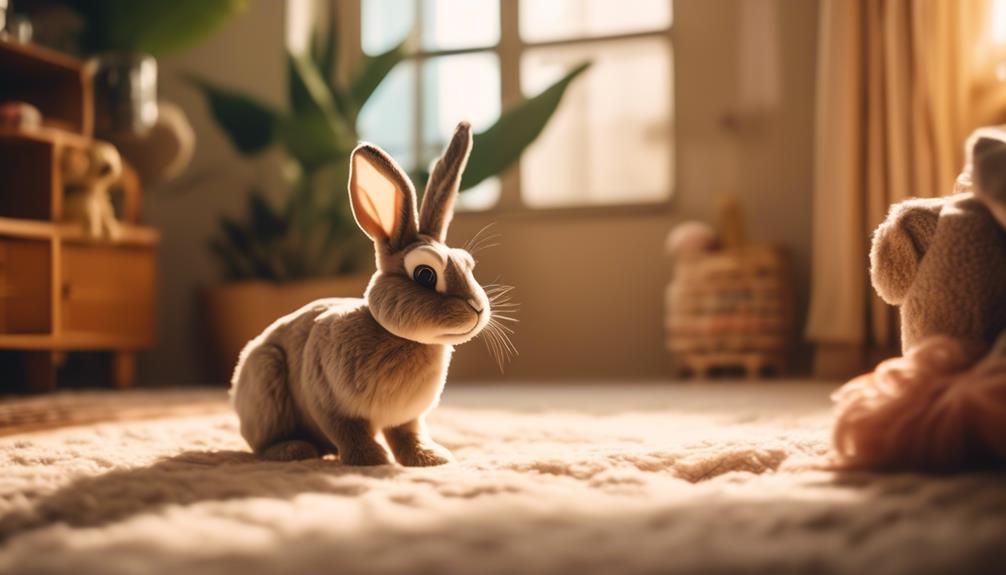
The charming Havana rabbit breed thrives in a variety of environments and is known for its calm and affectionate temperament. Whether you live in a small apartment or have a spacious backyard, these rabbits will adapt well to their surroundings. They are equally suited for singles, seniors, families with children, and even first-time rabbit owners. Havanas are indoor/outdoor rabbits, meaning they can be kept inside the house or in an outdoor enclosure. They are playful and sweet, making them great companions for both adults and children. To give you a better idea of their suitability, here is a table outlining the best environments and temperament of the Havana rabbit breed:
| Best Suited For | Environment | Temperament |
|---|---|---|
| Singles | Apartments | Calm |
| Seniors | House | Affectionate |
| Families with children | Indoor/Outdoor | Playful |
With their adaptable nature and loving personality, the Havana rabbit breed is a great choice for anyone looking for a furry friend.
Frequently Asked Questions
Can Havana Rabbits Be Litter Trained?
Yes, Havana rabbits can be litter trained. With patience and consistency, you can teach them to use a litter box. Provide a suitable litter box, use positive reinforcement, and clean the box regularly for success.
Are Havana Rabbits Prone to Any Specific Health Issues?
Havana rabbits, like any breed, can be prone to specific health issues. Regular mouth checks for ingrown teeth and awareness of flystrike are important. Ensure a balanced diet and proper cleanliness for their well-being.
How Often Do Havana Rabbits Need to Be Groomed?
Havana rabbits don’t require frequent grooming. A weekly brushing should suffice to keep their short, soft fur in good condition. Be sure to check for any mats or tangles and gently remove them.
Can Havana Rabbits Be Kept as Outdoor Pets?
Yes, Havana rabbits can be kept as outdoor pets. They require a raised enclosure off the ground and protection from wildlife. Regular cleanliness checks and awareness of flystrike are important for their health.
Do Havana Rabbits Get Along Well With Other Pets, Such as Dogs or Cats?
Havana rabbits can get along well with other pets like dogs or cats, but introductions should be done gradually and supervised. Always ensure the safety of both the rabbit and the other pets.
What Makes the Havana Rabbit Breed So Charming and Unique Compared to Other Rabbit Breeds?
The rare Brazilian rabbit breed, Havana, is charming and unique due to its glossy, chocolate-colored fur and distinctive personality. Unlike other rabbit breeds, Havanas are known for their curious and friendly nature, making them excellent pets for both children and adults. Their compact size and elegant appearance add to their appeal.
Conclusion
In conclusion, the Havana Rabbit breed is a delightful and affectionate companion that’s sure to brighten your days.
With their unique chocolate-colored fur and playful temperament, they make the perfect addition to any home.
Whether you’re a first-time owner or an experienced rabbit enthusiast, the Havana Rabbit will capture your heart.
So don’t hesitate to bring home one of these enchanting rabbits and experience the joy they can bring to your life.

